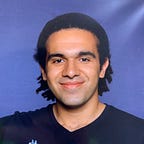Week #10–7125GFS CGI: Character Modelling
This week in CGI: Character Modelling we were working on the second stages of rigging. I missed the first stages of rigging last week.
The previous week involved creating the skeleton of the mes. This week involved creating the skin weights and basic controls.
Normally, there is the option to go straight into painting on the skin weights. However, our lecturer/tutor taught us a good way to create a starting point. I didn’t know this but there is an editor in Maya called the “Human IK” editor. Basically, it generates a control rig for a humanoid figure. Thankfully, this includes automatically generated skin weights.
Honestly, this sounded too good to be true…
…and of course it was.
The skin weights generated are very vague. This makes sense since the criteria “humanoid” is very vague to begin with. There is no way for Maya to account for every shape and form possible for a humanoid figure.
But still, it’s a good starting point for skin painting.
For visualising the painted skin weights, there are two options:
- White to transparent paint — Areas of the mesh coloured white will be affected by the selected joint. Shades between white and transparent dictate the influence a joint has over those areas of the mesh. Completely white areas have one-hundred percent influence while transparent areas have no influence.
- Thermal Paint — This is the same as the white to transparent paint except the spectrum now consists of heat map colours. From complete influence to no influence the colours are red, orange, yellow, green, and blue.
Of course, we didn’t do all the skin weight painting on the Eliza model because that would’ve taken more time than we had. All we did was practice on the model’s leg, hand, and jaw.
Assessment Progress
Now for the good stuff. The final assessment.
I’m happy to say that I managed to finish the retopology of the mesh.
It looks pretty good so I’ve decided to continue with it rather than the original base mesh that I submitted for assessment two. I’ve talked to my lecturer/tutor and he has said that it’s on the high end of what’s workable in terms of mesh density. I suspect that has something to do with the skin weight painting since it works based on the vertices on a mesh.
Unfortunately, there is a lot left to do and not a lot of time to do it. I have to go through the UV mapping and texturing process again and then I have to start rigging. This includes various blend shapes for the face, a skeleton, an IK rig, skin weights, and IK controls.
Oh boy…
